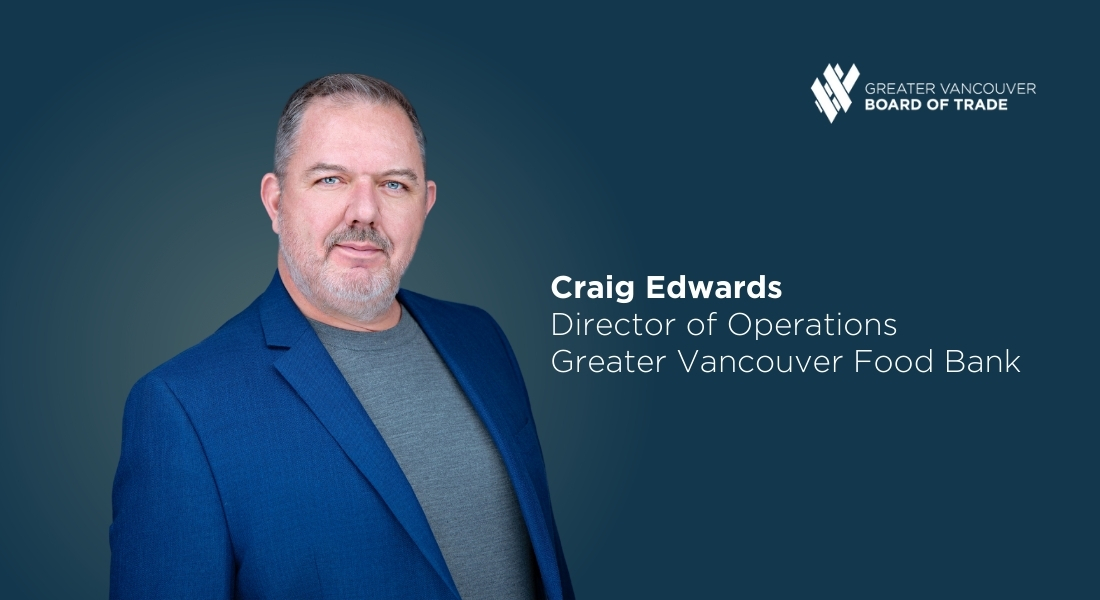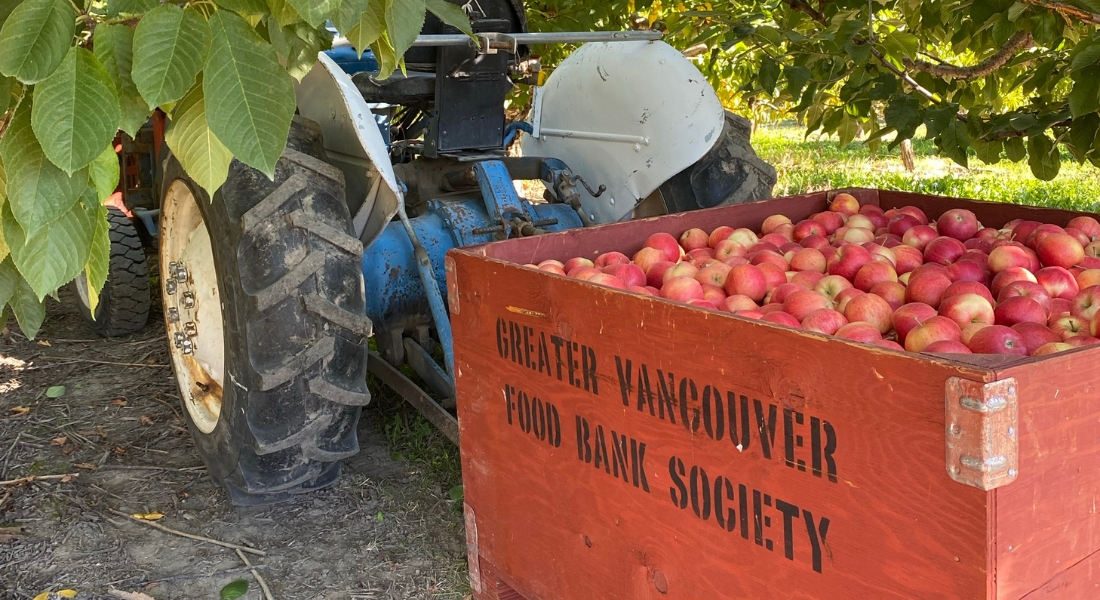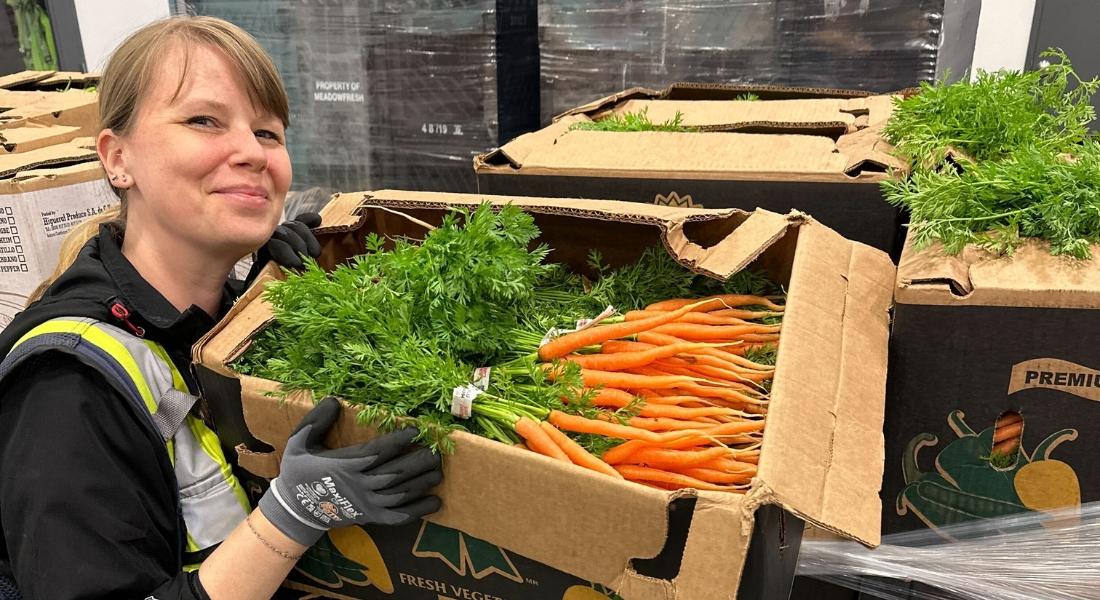How the Farmer Tax Credit Cultivates a Greener Future for All

Craig Edwards, Director of Operations at the Greater Vancouver Food Bank, has spent over 22 years building partnerships across logistics, retail, and farming to strengthen local food systems. His leadership has been instrumental in ensuring fresh, nutritious food reaches those in need. In this Community Spotlight Series feature, we explore how this tax credit helps farmers, reduces waste, and supports vulnerable communities.
In a province home to diverse farmlands, agriculture plays a massive role in shaping our economy and communities in British Columbia. However, despite an abundance of food being produced, a significant amount of farm-fresh produce goes to waste each year due to factors such as fluctuating market demand, weather conditions, limited infrastructure or minor cosmetic imperfections.
The BC Farmer Food Donation Tax Credit is an essential tool that addresses this problem by supporting farmers, rescuing surplus food, and connecting communities with fresh, nutritious options that would needlessly go to waste. This innovative tax credit not only provides financial relief to farmers but also strengthens local food systems, helping to reduce food insecurity and promote sustainable practices.
The Challenges We Are Facing
Agricultural Food waste cannot be ignored, especially when it comes to fresh produce, one of the most inaccessible items for those facing food insecurity. According to the BC Agricultural Council, approximately 30-40% of edible food produced in BC is lost at various stages of the supply chain, with the majority wasted at the farming stage. This waste represents an enormous economic loss for farmers and contributes to environmental degradation, including unnecessary greenhouse gas emissions from decomposing organic matter in landfills.
This surplus or “unsellable” produce is often discarded due to cosmetic imperfections, an oversupply of crops, insufficient labour funding, or the lack of timely transportation to the market. At the same time, farmers are struggling to navigate financial pressures, particularly as climate change and other external factors make farming more unpredictable and costly.
What is the BC Farmer Tax Credit
The BC Farmer Food Donation Tax Credit (FTC) was designed to reduce the financial burden on farmers by offering them tax incentives for adopting sustainable farming practices and distribution strategies that help prevent food waste. Through the tax credit, farmers are motivated to rescue surplus crops and redistribute them to those who need it most by donating farm-fresh produce to registered charities, like foodbanks, in their own communities.
The Solution at Work
One powerful example of community impact comes from one of the Greater Vancouver Food Banks (GVFB) longest standing farmer partners, Tyler Heppell from Heppell’s Potato Corp. Rescuing an incredible 160,000+ pounds of squash and potatoes from his family farm in South Surrey in 2024, the GVFB leveraged the FTC to help feed people in need and reduce their future tax costs—ensuring no good food goes to waste. Heppell’s Farm has provided a crucial solution to secure food for some of our most vulnerable populations by rescuing large quantities of gorgeous produce that would have otherwise been left in the field.
His efforts not only reduce waste but also offer a lifeline to his own family and their yearly tax burden. Last year, his family earned a tax credit of $909,418, by generously donating their surplus produce. By reducing the amount they owe in taxes, Heppell’s can free up valuable resources to reinvest in their operations and the sustainability of their business for the long term.
The FTC incentivizes redistribution, helping farmers recover 25% of the value of their surplus crops, improving financial stability and making farming more economically sustainable, while also benefiting the health of their local communities.
“My greatest joy this year was hand delivering a tax receipt totaling over $4.3 million dollars to one of our farmer partners in the Fraser Valley, who through their generous donation of nearly 1.8 million pounds of produce, helped feed thousands of individuals and families. By supporting farmers’ efforts to distribute surplus food, the program has been especially impactful in rural and low-income communities, where access to fresh produce and resources can be scarce.” – Rhandi Neal, GVFB Agricultural Lead.
What’s Next
Even with all these positives, the work is not yet finished. Limited infrastructure and a lack of cooler storage present significant challenges in preserving fresh food, especially for small-scale farmers. Without proper refrigeration or cold storage facilities, produce can quickly spoil, leading to significant losses. This not only affects farmers' bottom lines but also limits the amount of fresh food available for local communities.
Addressing this gap is the next crucial step for improving food preservation and reducing waste. Innovative ideas like freeze drying, juicing and dehydrating surplus produce will pave the way for future reach in our local communities and beyond.
In Conclusion
The FTC helps strengthen BC’s food systems and builds resilience in the face of economic and environmental challenges. By promoting food preservation and redistribution, the tax program can create a more self-sufficient food network, reducing reliance on imports and fostering a sense of community. As climate change and other factors continue to disrupt food production, it’s more important than ever to have systems in place that minimize waste and ensures that nutritious food reaches those in need, especially at the local level.
Although adequate cold storage remains one of the largest obstacles to this solution, the GVFB aims to collaborate with farmers, communities, government and private sector, to develop this initiative and demonstrate the power of collective action. With our eye on the future, we are continuing to further explore actions through three key food preservation methods: freeze-drying, dehydration and juicing. These methods reduce waste by extending the life of the recovered produce, benefiting farmers, local charities and people in need simultaneously. Together, we can create a greener, more equitable food future for all.
Written with support from Rhandi Neal, Agricultural Partnerships Lead at the GVFB.
This article is part of our initiative, the Community Spotlight Series. As part of our mandate to champion and celebrate businesses in the Greater Vancouver region, we, as a non-profit ourselves, want to use our platform to shine a spotlight on our non-profit members. Each quarter, we'll recognize a Vancouver-based non-profit that offers programs and services that improve the social and economic well-being of citizens in our community. This quarter, we're featuring the Greater Vancouver Food Bank.